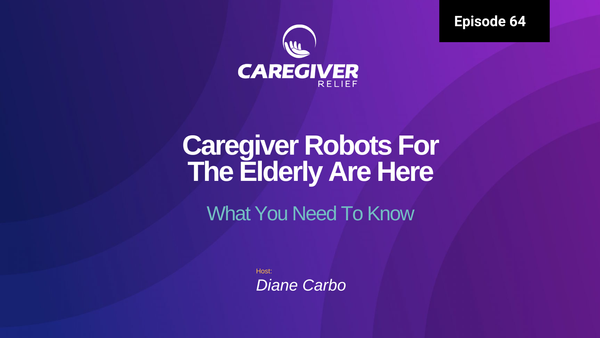Tips for Safely Caring for Your Back While Caregiving
Caring for your back is crucial when providing care for a family member. The physical demands of caregiving, can take a toll on your back.

Caring for your back is crucial when providing care for a family member. The physical demands of caregiving, especially in the later stages of many medical conditions, can take a toll on your back. It's essential to prioritize safety and well-being. Here are some tips to promote a healthy back while caregiving:
- Assess Your Limitations: Take a moment to evaluate your own physical limitations, especially if you have any back or hip issues.
- Utilize Supportive Tools: Consider using tools such as back supports, sliding boards, or modifying equipment like removing armrests from a wheelchair, using a walker, or a cane to make lifting and transferring easier.
- Communication is Key: Always inform your aging family member about what you are about to do, whether it's lifting, rolling them over, or transferring. Clear communication is essential for their comfort and safety.
- Involve Your Loved One: Whenever possible, ask your aging family member if they can assist with the lifting. Their cooperation can make the process smoother.
- Safety First: Ensure that the surface is not wet or slippery, and wear sensible shoes with good traction when lifting to prevent slips.
- Footwear Matters: Make sure your aging family member is wearing shoes with rubber soles to maintain a firm grip during transfers.
- Avoid Sudden Movements: Never jerk or suddenly pull on your aging family member during a transfer.
- Transfer Towards Strong Side: When transferring, move your aging family member from their strongest side toward the chair or bed.
- Fall Prevention: If your aging family member starts to fall, gently lower them to the floor. If you doubt your ability to lift them safely, don't hesitate to ask for assistance or call 911.
- Proper Lifting Technique: Lift with your legs, not your back, and maintain a straight back posture to reduce the risk of back strain.
- Stretch Before and After: Incorporate gentle back stretches before and after lifting to help prevent muscle strain.
In addition to these precautions, it's essential to take regular breaks and practice self-care. Many family caregivers handle their responsibilities without additional help, which can be physically and emotionally taxing. If you're feeling overwhelmed or experiencing physical discomfort during the caregiving process, don't hesitate to consult with your doctor or seek support from caregiver groups or organizations.
Protecting yourself when providing care is vital to prevent injury, ensuring that caregivers can remain strong and healthy. Prioritize self-care and seek assistance when necessary. Remember, caring for your physical and mental well-being is paramount when taking care of your loved ones. Whether it's assisting with daily activities like moving from bed to chair, to the toilet, or simply helping them stand from a sitting position, safety should always be the top priority when assisting, lifting, or transferring your family member. Proper technique and body mechanics will not only safeguard your loved one but also protect you from potential injury.
The Physical Demands and Importance of Self-Care for Caregivers
Being a caregiver is physically demanding, and many people underestimate just how much it takes a toll on the caregiver's physical well-being. From housekeeping and running errands to lifting and transferring clients, the physical tasks can be exhausting. On top of that, caregivers often forget to take breaks for themselves because they are so focused on the needs of their care recipient.
However, self-care for caregivers is crucial. If a caregiver becomes burnt out or experiences compassion fatigue, their ability to work effectively will suffer. One of the most common physical ailments caregivers experience is back pain, which can be a warning sign of bigger issues. The repetitive movements, lack of rest, and hours spent on their feet can cause pain and injury to the spine. In fact, a study found that 58% of caregivers experience low back pain. But back pain doesn't have to be inevitable for every caregiver. By practicing self-care, establishing healthy routines, and following these home care tips, caregivers can provide excellent care while protecting their backs.
Here are some essential back care tips to follow:
Practice Safe Lifting Techniques: Proper transferring and lifting techniques should be part of core caregiving training. Caregivers should always follow lifting protocols, even for smaller clients, to prevent back injuries.
Take Regular Breaks: Caregiving is physically demanding, so taking short breaks every hour to sit, breathe, and stretch can alleviate back pain and prevent injuries. These breaks also benefit a caregiver's emotional and mental well-being.
Treat Yourself: Don't wait until the pain becomes severe. Treat the first signs of pain or injury as soon as possible through professional help like seeing a physician or physical therapist. Consider activities like yoga or getting a massage.
Exercise Your Core: Strengthening your core can protect the spinal cord, back, and overall musculoskeletal frame. Regular core exercises can also correct poor posture that caregivers can develop due to the physical demands of caregiving.
Stay Hydrated: Dehydration can increase the risk of injury and lead to muscle fatigue and stiff joints. Remember to drink plenty of water to stay hydrated and improve overall well-being.
By following these back care tips and taking proper care of themselves, caregivers can prevent back pain and injuries.
Our Resources section can help you find the information and tools that you need. We have courses, videos, checklists, guidebooks, cheat sheets, how-to guides and more.
You can get started by clicking on the link below. We know that taking care of a loved one is hard work, but with our help you can get the support that you need.
Click here to go to Resources Section now!




